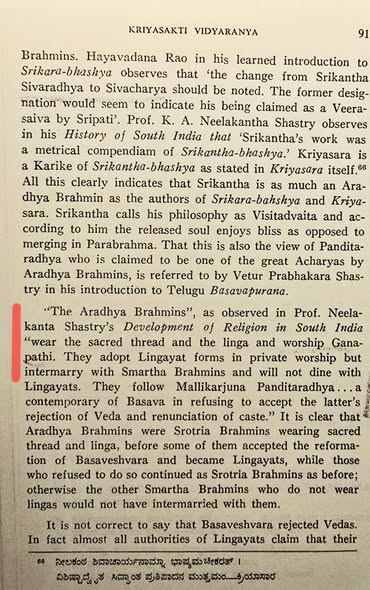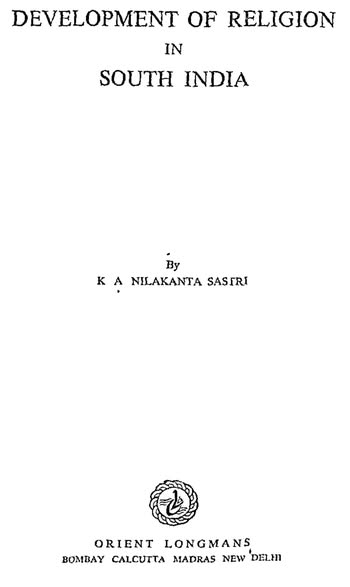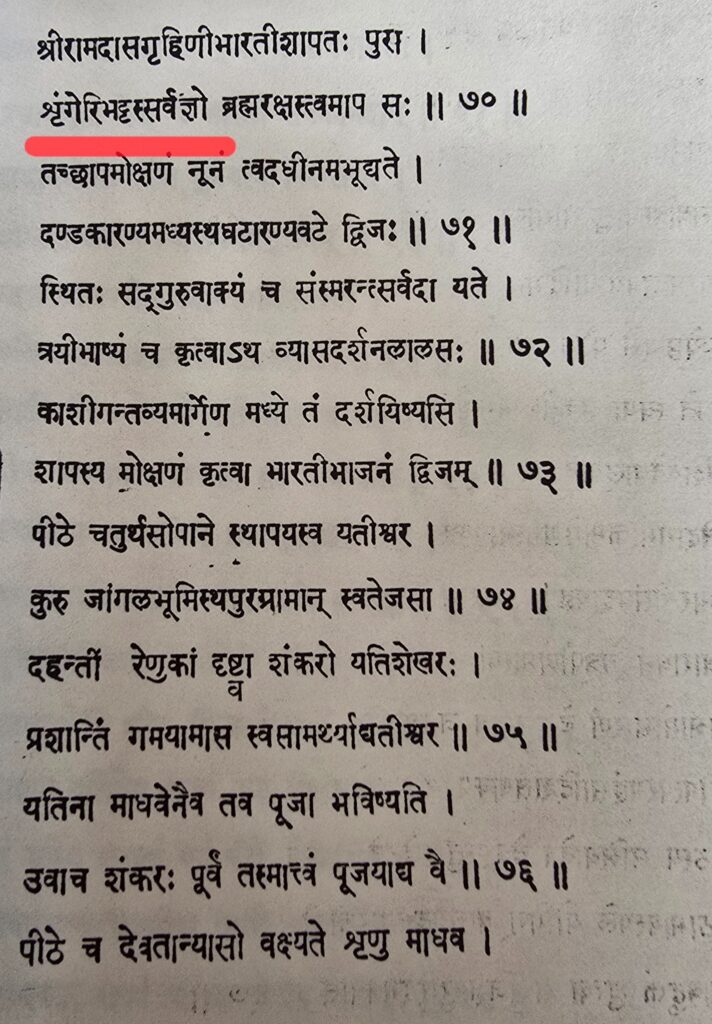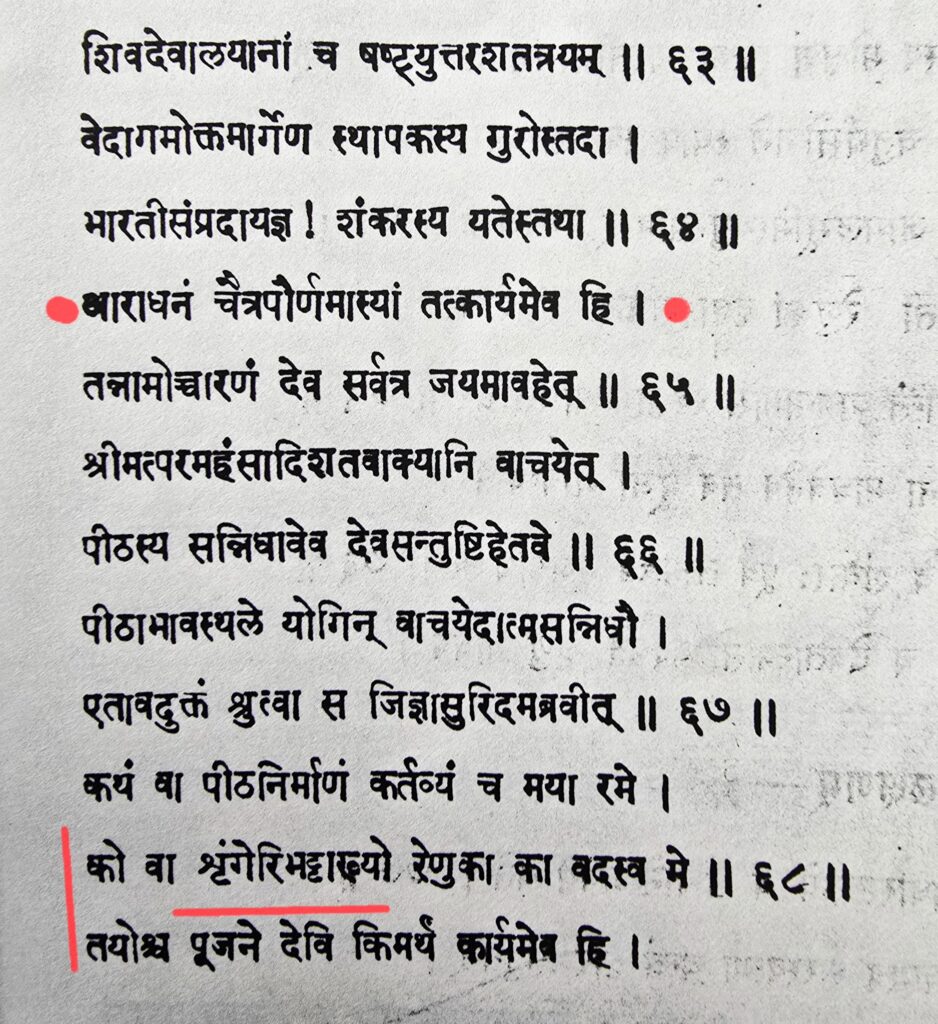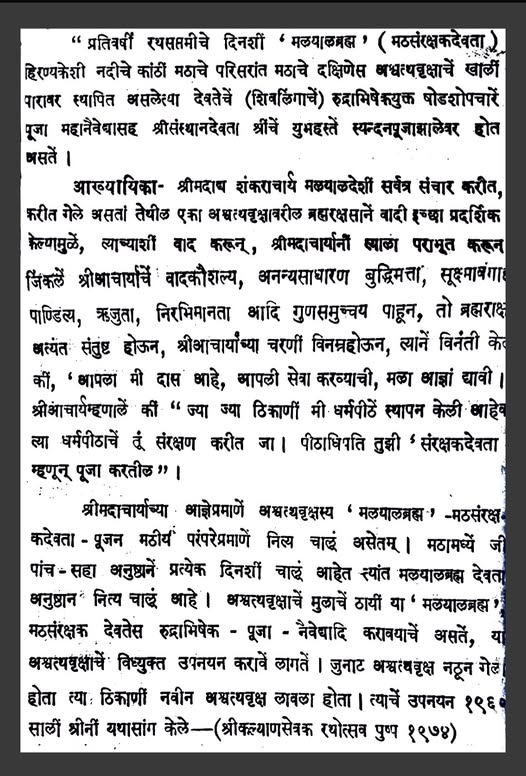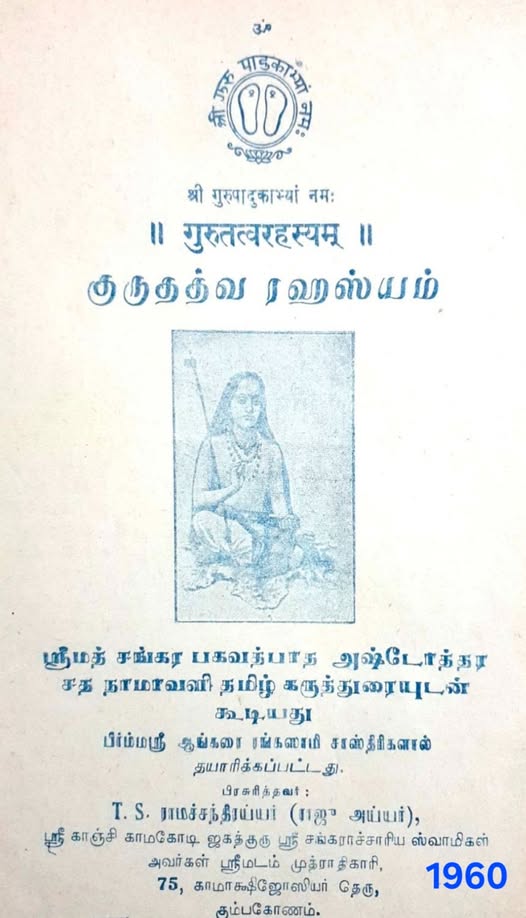Prof.K.A.Neelakanta Sastri says, the Aradhyas of northern circar, Cuddapah, Kurnool and Mysore wear the sacred thread and the linga and worship Ganapati.
The Aradhyas follow the Shuddha-Shaiva-Amnaya tradition.
The Virashaivas claim that Revanna Siddha maha Yogi, their Preceptor, gifted Shankaracharya the Ratnagarbha Ganapati and Chandramouleeshwara linga murtis, citing the Guruvamsha-kavya of the Tunga Sringeri Matha.
This similarity of worshiping Shivalinga and Ganapati together like the Aradhya Brahmins tradition naturally raises a question in the minds of researchers :
Who actually gave these murtis?
Note: The Shivarahasya, Anandagiri’s Shankaravijaya, Markandeya Samhita and other traditional sources mention only the five Chandramouleeshwara sphatika lingas brought by Shankara Bhagavatpada.
